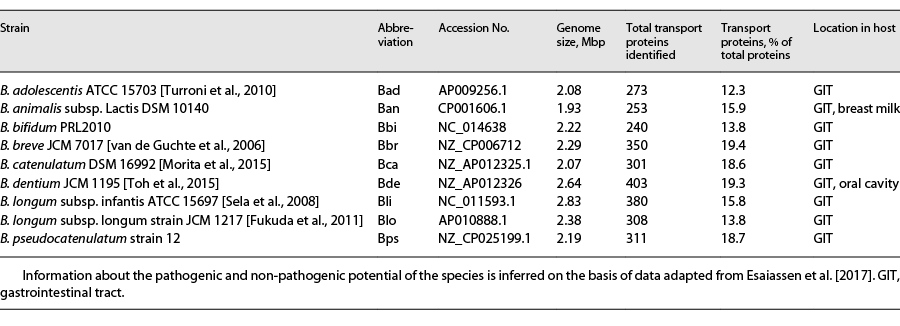Dr. Zafar and Dr. Saier just published a paper in the journal Microbial Physiology. The title is: Comparative Analyses of the Transport Proteins Encoded within the Genomes of nine Bifidobacterium Species. For your convenience, this is the link to PubMed.
Abstract
The human microbiome influences human health in both negative and positive ways. Studies on the transportomes of these organisms yield information that may be utilized for various purposes, including the identification of novel drug targets and the manufacture of improved probiotic strains. Moreover, these genomic analyses help to improve our understanding of the physiology and metabolic capabilities of these organisms. The present study is a continuation of our studies on the transport proteins of the major gut microbes. Bifidobacterium species are essential members of the human gut microbiome, and they initiate colonization of the gut at birth, providing health benefits that last a lifetime. In this study we analyze the transportomes of nine bifidobacterial species: B. adolescentis, B. animalis, B. bifidum, B. breve, B. catenulatum, B. dentium, B. longum subsp. infantis, B. longum subsp. longum, and B. pseudocatenulatum. All of these species have proven probiotic characteristics and exert beneficial effects on human health. Surprisingly, we found that all nine of these species have similar pore-forming toxins and drug exporters that may play roles in pathogenesis. These species have transporters for amino acids, carbohydrates, and proteins, essential for their organismal lifestyles and adaption to their respective ecological niches. The strictly probiotic species, B. bifidum, however, contains fewer such transporters, thus indicative of limited interactions with host cells and other gut microbial counterparts. The results of this study were compared with those of our previous studies on the transportomes of multiple species of Bacteroides, Escherichia coli/Salmonella, and Lactobacillus. Overall, bifidobacteria have larger transportomes (based on percentages of total proteins) than the previously examined groups of bacterial species, with a preference for primary active transport systems over secondary carriers. Taken together, these results provide useful information about the physiologies and pathogenic potentials of these probiotic organisms as reflected by their transportomes.


